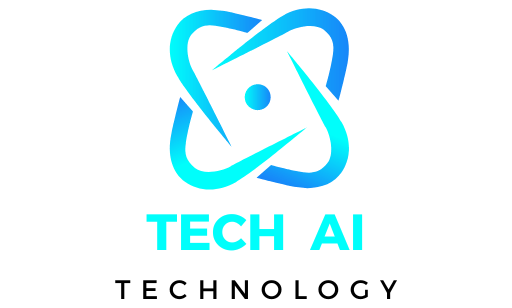The role of a day to day embedded software engineer in 2025 is more dynamic than ever, driving innovation in real time systems, IoT devices, and AI powered automation. From firmware development and microcontroller programming to debugging embedded systems and optimizing performance, these professionals ensure that smart devices, automotive technology, and industrial automation run seamlessly.
As industries embrace edge computing, machine learning integration, and energy efficient embedded solutions, mastering C/C++, RTOS, and low level debugging has become essential. This guide explores the daily responsibilities, cutting edge trends, and must have skills to thrive as an embedded systems engineer in today’s fast evolving tech landscape.
Day to Day Embedded Software Engineer in 2025
A day to day embedded software engineer develops and optimizes software for real time systems, IoT devices, and microcontrollers. Their work includes firmware programming, debugging, and system optimization.
They ensure devices run smoothly by writing efficient code, testing hardware interactions, and fixing issues. In 2025, engineers integrate AI, machine learning, and cloud connectivity into embedded systems. This article explores their daily tasks, key skills, and future trends.
Daily Responsibilities of an Embedded Software Engineer
An embedded software engineer writes low level code for hardware components. They work with C, C++, Python, and Rust to develop firmware and real time applications. Debugging is a crucial task, ensuring system stability and efficiency.
Engineers also focus on hardware software integration, memory optimization, and power management. They test software using simulation tools and real world hardware setups. As technology advances, they also handle over the air (OTA) updates, security patches, and AI driven automation.
Essential Technologies and Tools
Modern embedded engineers use C, C++, and Rust for programming. Python is common for automation and testing. Real time applications require RTOS (Real Time Operating Systems) like FreeRTOS and Zephyr. AI powered devices use TensorFlow Lite and TinyML for edge computing.
Engineers also work with 5G connectivity, IoT protocols, and cybersecurity frameworks. Debugging tools like JTAG, logic analyzers, and simulators help identify and fix issues.
Challenges and Future Trends
Embedded systems must be fast, secure, and energy efficient. Engineers tackle low latency processing, AI integration, and real time decision making. Edge computing and IoT expansion drive new innovations. In 2025, industries focus on smart automation, autonomous vehicles, and medical devices.
Engineers must adapt to new safety regulations and AI powered solutions. The demand for secure, reliable, and scalable embedded systems continues to grow.
What Does an Embedded Software Engineer Do?
An embedded software engineer develops low level firmware and real time applications for electronic devices. They write optimized code that controls microcontrollers, sensors, and embedded processors. Their work ensures system reliability, power efficiency, and real time performance.
They debug and troubleshoot complex hardware software interactions to enhance system stability. Managing memory allocation and power consumption is crucial for performance. These engineers work with embedded C, C++, and RTOS to create efficient and responsive systems.
From IoT devices to automotive control units, embedded engineers play a key role in designing intelligent, high performance embedded solutions.
Daily Tasks and Responsibilities of an Embedded Systems Developer
Embedded systems developers play a crucial role in designing, coding, and optimizing software for hardware devices. Their daily tasks involve programming, debugging, system optimization, and collaboration with cross functional teams. Let’s explore their key responsibilities.
1. Programming and Development
Embedded developers write efficient code in C, C++, Rust, and Python to control hardware and manage real time operations. They use embedded frameworks like FreeRTOS, Zephyr, and Embedded Linux for system development.
Communication protocols such as SPI, I2C, UART, CAN, BLE, and MQTT are essential for device interactions. Writing firmware, configuring peripherals, and integrating sensor data are core activities.
2. Debugging and Testing
Troubleshooting is a critical task in embedded development. Developers use JTAG debuggers, logic analyzers, and oscilloscopes to analyze system behavior. They perform unit tests, integration tests, and hardware simulations to ensure functionality.
Debugging involves fixing memory leaks, resolving timing issues, and improving real time system performance.
3. System Optimization
Optimizing embedded systems enhances efficiency and reliability. Developers focus on power consumption in battery powered devices to extend usage. They improve memory management, CPU efficiency, and real time scheduling for smooth operations. Handling interrupts and task prioritization ensures the system responds quickly to external inputs.
4. Collaboration and Documentation
Embedded engineers work closely with hardware designers, product developers, and cloud engineers to integrate software with hardware. They write technical documentation, firmware guides, and code comments for future reference. Following Agile workflows, they participate in daily stand up meetings, sprint reviews, and team discussions to track project progress.
Top Skills and Knowledge Required in 2025 for Embedded Systems
The demand for embedded systems expertise is evolving fast. In 2025, professionals must master programming, microcontroller knowledge, embedded OS, AI integration, cybersecurity, and connectivity. Below are the essential skills:
1. Programming Languages: C, C++, Rust, Python
Embedded systems rely on C and C++ for low level programming. Rust is gaining popularity for its memory safety and concurrency benefits. Python is crucial for prototyping and AI driven applications. Mastering these languages ensures efficiency, security, and performance.
2. Microcontroller & Processor Knowledge
Experts must understand ARM Cortex, ESP32, STM32, and Raspberry Pi. These microcontrollers power IoT devices, smart sensors, and industrial automation. Developers need skills in real time processing, low power optimization, and peripheral interfacing for embedded applications.
3. Embedded Operating Systems
Knowledge of FreeRTOS, Zephyr, and Embedded Linux is essential for real time computing. FreeRTOS supports low power IoT devices, Zephyr excels in scalability, and Embedded Linux is preferred for high performance applications. These OS power modern autonomous systems and industrial controls.
4. AI & Machine Learning Integration
Embedded AI is transforming edge computing. Developers must learn TinyML and TensorFlow Lite for real time AI processing on microcontrollers. AI models enable predictive maintenance, object detection, and speech recognition in smart devices.
5. Cybersecurity in Embedded Systems
Security is critical in 2025. Professionals need expertise in secure boot, encrypted firmware, and secure OTA updates. These prevent hacking, data breaches, and malware attacks. Strong hardware security modules (HSMs) and zero trust architectures are becoming standard.
6. Networking & Connectivity
Devices must support 5G, LoRa, Bluetooth, Wi-Fi, and Zigbee. 5G enables ultra fast communication, LoRa provides long range IoT connectivity, and Bluetooth & Zigbee ensure low power wireless communication. Engineers must integrate these for seamless IoT networking.
5 Tools & Technologies Used by Embedded Software Engineers in 2025

Embedded software engineers rely on advanced tools to design, debug, and optimize firmware. The right development environment, debugging tools, and testing frameworks ensure efficiency and reliability. Below are the essential tools and technologies used in 2025.
1. Development Environments
Modern embedded systems require robust Integrated Development Environments (IDEs) for coding and debugging. Engineers use:
- Keil: Ideal for ARM based microcontrollers, offering advanced debugging features.
- STM32CubeIDE: Best for STM32 MCUs, with built in libraries and configurators.
- PlatformIO: A cross platform IDE supporting various boards and frameworks.
- VS Code: Lightweight and extensible, popular for embedded development with plugins.
These IDEs provide code completion, debugging support, and compiler integration, improving development workflows.
2. Simulation & Debugging Tools
Reliable debugging is critical for embedded systems. Engineers use:
- JTAG: Hardware debugging for microcontrollers, allowing real time memory access.
- GDB: A powerful open source debugger for embedded applications.
- Logic Analyzers: Capture and analyze digital signals, ensuring correct data transmission.
- Oscilloscopes: Essential for monitoring voltage signals and diagnosing hardware issues.
Using these tools, developers can identify memory leaks, fix timing issues, and optimize performance in embedded firmware.
3. Version Control & CI/CD
Version control and Continuous Integration/Continuous Deployment (CI/CD) streamline development and collaboration. Popular tools include:
- GitHub & GitLab: Manage source code, track changes, and collaborate on embedded projects.
- Jenkins: Automates builds and testing, improving software quality.
These platforms ensure code stability, version tracking, and automated deployment, essential for large scale projects.
4. Testing Frameworks
Testing is crucial for embedded software reliability. Engineers use:
- Google Test: A C++ testing framework for validating embedded software.
- Ceedling: A unit testing framework designed for C-based embedded applications.
- Unity: A lightweight test framework optimized for microcontrollers.
These frameworks help identify software bugs, ensure code stability, and automate testing, improving firmware quality.
Key Challenges in Embedded Software Engineering (2025)
Embedded software engineering plays a crucial role in modern technology, powering IoT devices, industrial automation, and smart systems. However, developers face multiple challenges while ensuring efficiency, security, and reliability. Here’s a look at the six biggest challenges in embedded software engineering and how to overcome them.
1. Real Time Performance Issues and Optimization Techniques
Real time embedded systems must process data instantly without delays. Latency, execution time, and response speed are critical factors. Engineers optimize performance using:
- Efficient coding techniques like loop unrolling and inline functions.
- Real time operating systems (RTOS) to manage tasks effectively.
- Hardware acceleration with dedicated DSPs and FPGAs.
- Memory optimization through stack and heap management.
2. Power Management for IoT and Battery Powered Devices
Energy efficiency is essential for IoT devices and portable systems. Power hungry components drain batteries quickly, leading to reduced lifespan. Solutions include:
- Dynamic voltage and frequency scaling (DVFS) to adjust power usage.
- Low power microcontrollers with energy efficient architectures.
- Adaptive sleep modes to minimize power consumption during idle times.
- Energy harvesting techniques, such as solar or kinetic power.
3. Security Risks in Connected Devices and Mitigation Strategies
Cybersecurity threats are increasing in embedded systems, especially for IoT and automotive applications. Common vulnerabilities include weak encryption, firmware tampering, and unauthorized access. Key security measures involve:
- End to end encryption for secure data transmission.
- Secure boot mechanisms to prevent unauthorized firmware modifications.
- Regular firmware updates to patch security flaws.
- Hardware security modules (HSMs) for cryptographic key storage.
4. Hardware Software Integration Challenges and Debugging Complexities
Embedded software must seamlessly interact with hardware components. Mismatched configurations, faulty drivers, and timing issues cause failures. Developers tackle these problems by:
- Using hardware abstraction layers (HALs) to simplify compatibility.
- Emulation and simulation tools for early stage debugging.
- JTAG and SWD debuggers for real time code inspection.
- Automated testing frameworks to detect integration issues quickly.
5. Keeping Up with Emerging Technologies and Frameworks
Embedded systems rapidly evolve, introducing new architectures, AI powered optimization, and advanced programming languages. Staying updated is challenging but necessary. Engineers stay ahead by:
- Following industry standards like ISO 26262 for automotive safety.
- Learning new programming models such as Rust for safer embedded coding.
- Utilizing AI driven development tools for automated code generation.
- Engaging in open source communities to collaborate and share knowledge.
7 Future Trends in Embedded Software Engineering (2025 and Beyond)

Embedded software engineering is rapidly evolving with AI, IoT, and edge computing shaping the future. Developers are focusing on automation, efficiency, and connectivity. Here are the top trends in 2025 and beyond.
1. AI Powered Embedded Systems for Automation
Artificial Intelligence is transforming embedded systems. AI driven algorithms enhance decision making in smart devices. Machine learning enables automation in robotics, healthcare, and industrial applications. Expect AI powered edge devices to reduce latency and improve real time processing.
2. Edge Computing and Decentralized Processing
Edge computing reduces cloud dependency by processing data closer to the source. This minimizes latency, enhances security, and improves efficiency. In 2025, decentralized processing will power autonomous systems, IoT networks, and real time analytics.
3. 5G and IoT Expansion for Ultra Fast Connectivity
5G technology is revolutionizing IoT and embedded systems. Faster data transmission enhances smart cities, autonomous vehicles, and industrial automation. IoT devices will leverage 5G networks for seamless, real time communication.
4. Software Defined Vehicles and Automotive Embedded Systems
Modern vehicles rely on embedded software for autonomous driving, ADAS (Advanced Driver Assistance Systems), and infotainment. Software defined vehicles (SDVs) allow remote updates, AI powered navigation, and predictive maintenance. The automotive industry is shifting towards cloud connected, software driven solutions.
5. Energy Efficient and Eco-Friendly Embedded Solutions
Sustainability is a priority in embedded systems. Low power microcontrollers and energy efficient firmware are reducing carbon footprints. Innovations like green computing and AI optimized power management enhance battery life and performance in smart devices.
6. Real Time Embedded Security Enhancements
With IoT expansion, cybersecurity threats are increasing. Future embedded systems will integrate AI driven security measures, blockchain for authentication, and hardware based encryption. Secure boot and trusted execution environments (TEE) will be standard in 2025.
7. Open Source Development and Embedded DevOps
The rise of open source frameworks accelerates embedded software innovation. DevOps practices in embedded development streamline deployment, testing, and updates. Continuous Integration/Continuous Deployment (CI/CD) ensures real time software optimization.
Career Growth & Opportunities in Embedded AI & IoT (2025 Updated)

1. Job Roles & Career Paths
The rise of IoT, AI, and embedded systems has created high paying career paths. Key roles include:
- Firmware Engineer: Develops low level software for embedded devices.
- IoT Developer: Designs smart, connected solutions for industries.
- Embedded AI Engineer: Integrates AI into edge devices for real time data processing.
These careers require expertise in C/C++, Python, embedded systems, AI models, and IoT protocols like MQTT and Zigbee.
2. High Demand Industries
By 2025, IoT and AI powered solutions will dominate multiple sectors:
- Automotive: Smart vehicles, ADAS, and autonomous driving systems.
- Healthcare: AI powered medical devices, remote patient monitoring.
- Smart Homes: Home automation, voice controlled assistants, IoT security.
- Industrial Automation: Robotics, predictive maintenance, and AI driven quality control.
The demand for AI powered embedded systems will keep increasing, making these fields lucrative for professionals.
3. Certifications & Learning Resources
To boost your career, consider certifications in embedded systems, AI, and IoT:
- Embedded Systems Certifications: Arm, Texas Instruments, Coursera, Udemy.
- AI & IoT Courses: NVIDIA Deep Learning, Google AI, edX IoT programs.
- Cloud & Edge Computing: AWS IoT, Azure IoT, Google Cloud AI.
These courses help professionals stay ahead in AI integrated IoT development.
4. Salary Expectations & Remote Work in 2025
Embedded AI and IoT roles offer competitive salaries:
- Firmware Engineer:$90,000 to $140,000/year.
- IoT Developer: $95,000 to $150,000/year.
- Embedded AI Engineer: $100,000 to $160,000/year.
With the rise of 5G, cloud computing, and AI driven automation, remote opportunities are increasing. Many firms now offer hybrid or fully remote IoT and AI jobs, allowing flexible work environments.
FAQs:
Q1. What does an embedded software engineer do daily?
An embedded software engineer writes, tests, and optimizes software for hardware devices. They work on firmware development, debugging, real time system performance, and security enhancements. Their daily tasks involve coding, troubleshooting, and collaborating with hardware teams.
Q2. What programming languages are essential for embedded software engineers in 2025?
The most in demand languages are C, C++, Rust, and Python. C and C++ are used for low level firmware, Rust offers memory safety, and Python helps with testing and automation.
Q3. What tools do embedded engineers use for debugging?
Engineers rely on JTAG debuggers, logic analyzers, oscilloscopes, and serial monitors. Software tools like GDB, OpenOCD, and Segger J-Link help diagnose system issues efficiently.
Q4. What industries hire embedded software engineers?
Embedded engineers work in automotive (self driving cars), IoT (smart homes, wearables), healthcare (medical devices), and industrial automation (robotics, AI driven factories). The demand is increasing in AI powered embedded solutions.
Q5. How do embedded software engineers optimize power consumption?
They use low power microcontrollers, deep sleep modes, efficient code execution, and dynamic voltage scaling. Power management is critical for battery powered IoT devices and wearable technology.
Q6. What are the biggest challenges in embedded software engineering?
Challenges include real time system constraints, debugging hardware software interactions, security vulnerabilities, and integrating AI and IoT technologies. Engineers must also stay updated with new frameworks and development practices.
Q7. How is AI affecting embedded systems in 2025?
AI is enabling edge computing, real time decision making, and autonomous systems. Embedded engineers now work with TinyML, TensorFlow Lite, and AI powered microcontrollers to build smart and self learning devices.
Q8. What is the best way to start a career in embedded software engineering?
Start by learning C and C++, working on Arduino and Raspberry Pi projects, and gaining experience with RTOS, IoT, and debugging tools. Certifications and open source contributions can also boost your career.
Q9. What is the future of embedded software engineering?
The field is evolving with AI driven automation, 5G connected devices, and software defined hardware. Future embedded systems will focus on efficiency, security, and real time data processing for autonomous and smart applications.
Q10. What are the best resources to learn embedded software development?
Top resources include online courses (Udemy, Coursera, MIT OpenCourseWare), embedded system books, forums like Stack Overflow, and hands on projects with development boards like ESP32 and STM32.
Conclusion:
Embedded software engineering is a fast evolving field, shaping the future of IoT, AI, and real time systems. Engineers handle coding, debugging, and optimizing embedded systems daily, ensuring performance, security, and efficiency. With advancements in AI driven automation, low power computing, and edge processing, the role of embedded engineers is more critical than ever.
Staying updated with new tools, programming languages, and industry trends is key to success. As technology advances, embedded software engineers will continue to innovate, making smart devices more powerful and efficient. 🚀

